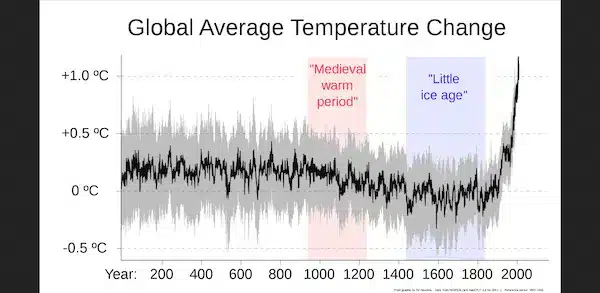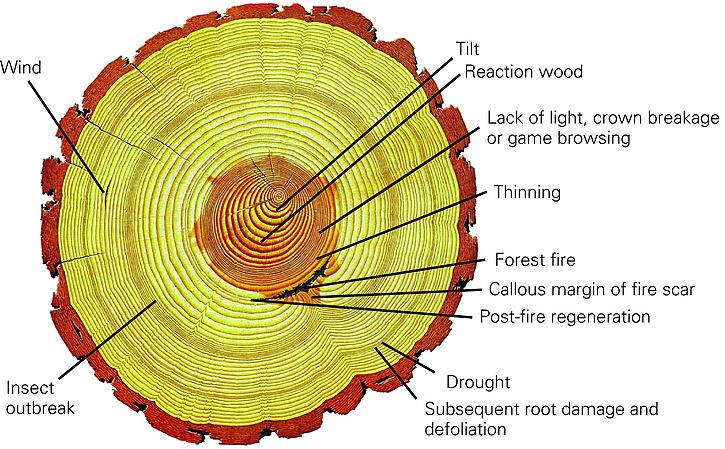A new study of tree rings in Scandinavia is helping to resolve a longstanding question about the Medieval Warm Period.
Past studies of tree rings had indicated that the Medieval period was as warm or warmer than today, but climate models found otherwise.
The Middle Ages and the following centuries were socially and climatically volatile, according to research from the Swiss Federal Institute for Forest, Snow and Landscape Research, published in Nature.
Not only was there a ‘Little Ice Age’, but also it’s opposite – the ‘medieval climate anomaly’, during which it may have been unusually warm.

Reconstructed temperatures from annual tree rings clearly show the latter.
Historically accurate depictions of mediaeval temperatures frequently show them greater than current ones.
“This has long been a puzzle because there is no known physical explanation for such exceptional medieval warmth, says the institute’s head researcher Dr Georg von Arx.
“Climate models are therefore unable to simulate it and instead show only moderately warm temperatures for the medieval climate anomaly,” Dr von Arx said.

The new research supports climate models
“Previous reconstructions are based on the width or density of the annual tree rings; both are very much dependent on temperature, but sometimes other factors play a role in how wide or dense a tree ring gets.”
The head of the Dendrosciences research group and other researchers have created a new reconstruction based on an exact method to extract temperature information from trees.
The researchers conclude that today’s warming is likely outside the range of natural temperature fluctuations over the past 1200 years.
For its study, the institute used a new method to directly measure the cell wall thickness of the wood cells in the annual tree rings.
“Each cell in each tree ring records climatic information under which it was formed,” researcher Jesper Björklund said.
“By analysing hundreds, sometimes thousands, of cells per ring, extraordinary pure climate information can be obtained,” Björklund explained.
50 million cells measured
For their new time series, the researchers measured the cell walls of 50 million cells. These were from 188 living and dead Swedish and Finnish Scots pines (Pinus sylvestris), whose annual rings cover 1170 years.
The researchers then reconstructed the summer temperatures in this region based on these measurements.
They compared them both with model simulations of the regional climate and previous reconstructions based on the density of the annual rings.
Unprecedented warming
The result was clear: the temperatures of the models and the new time series align.
“This means that there are now two independent accounts of the regional climate that both find lower temperatures during the medieval period, providing new evidence that this phase was not as warm as previously thought,” says Björklund.
“Instead, both show that the current warming is unprecedented, at least in the past millennium and emphasise the role of greenhouse gas emissions on Scandinavian temperature variability.”

In contrast, the previous reconstructions based on tree ring density indicated significantly higher temperatures for the medieval climate anomaly and lower temperatures for the current warming.
“This is critical because such reconstructions are considered when evaluating the accuracy of climate models,” says von Arx.
“If the previous reconstructions were used as a benchmark, this would significantly downplay the human influence on climate warming and reduce confidence in model projections.”
Editor’s note: Dendrochronology (a word derived from the Greek dendron, ‘tree limb’, khronos, ‘time’, and -logia, the study of) consists of analysing tree-ring patterns to identify and date past disturbances such as rockfall events, wildfires or snow avalanches as well as past climate conditions. This implies far more than just counting tree rings.






